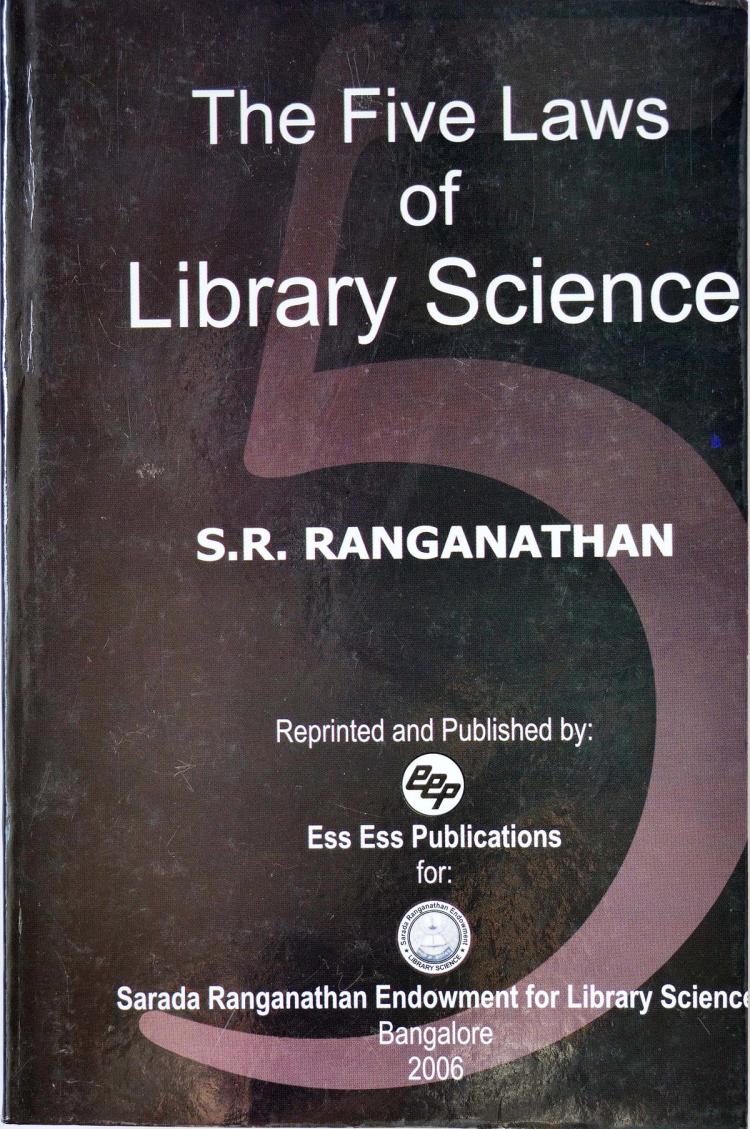The Five Laws of Library Science is a theory proposed by S. R. Ranganathan in 1931, detailing the principles of operating a library system. Five laws of library science are called the set of norms, percepts, and guides to good practice in librarianship. Many librarians worldwide accept them as the foundations of their philosophy. Dr. S.R. Ranganathan conceived the Five Laws of Library Science in 1924. The statements embodying these laws were formulated in 1928 and first published in 1931. These laws are:
Books Are For Use
Every Reader His/Her Book
Every Book Its Reader
Save The Time Of The Reader
The Library Is A Growing Organism
These are the "fundamental laws" of Library Science. Ranganathan states that they are applicable to any problem in the areas of library science, library service, and library practice. These laws are like pot containing oceans. Prior to their enunciation, the subject of Library Science had no philosophy. These laws gave a philosophical base, guaranteeing an everlasting future to the subject of library science, the profession of librarianship, and the use of libraries. These laws have provided a scientific approach to the subject of library science. Even though S.R. Ranganathan proposed the Five Laws of Library Science before the advent of the digital age, they are still valid and equally relevant today.
